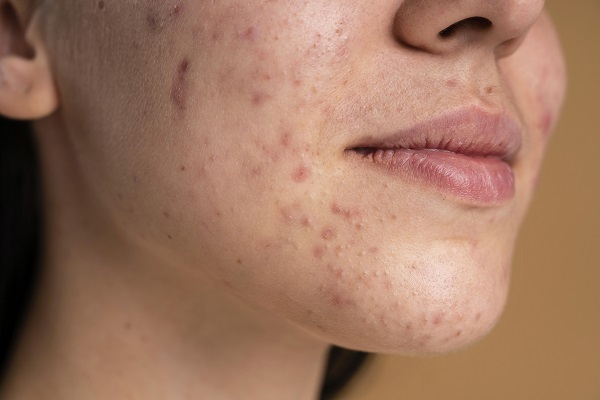
Scar camouflage is a technique used almost like makeup so it can mask the scar on its own identity to a more natural-looking skin. The scar camouflage can be done on scarring, stretch marks, vitiligo, and certain skin conditions where it can be camouflaged.
The scar on its own is frightening, many people may consider this as a sign of victory or the mark of survivor hood. But for most people, it would be the most traumatic moment that they faced and they could give a world to get rid of that, it might be the moment it might be the reminder of that moment. Whatever the scenario is most people are getting scar camouflaged nowadays most prevalently.
There might be multiple reasons for getting scar camouflaged like mastectomy or breast reconstruction, for example, the scar blends into the surroundings over the period and the surgeon’s skill matters even with the body’s physiology. The proper aftercare along with topical scare therapies like silicone gel applicators or strips and cosmetic procedures like micro-needling and lasers will make an enormous difference. In recent years scar minimizing has gained a lot of popularity, which is known as scar camouflage and its technique is like permanent make-up like cosmetic tattooing to camouflage the appearance of the mark.
Let’s know more about scar camouflage
This technique can also be called skin color tattooing. Where the scar camouflage is a needle and pigment technique that blends well in the scars and the surroundings as natural skin using the pigments. Typically it is performed by a medical or a paramedical technician or an artist, where the skin regimentation occurs. The scars and stretch marks and other areas which are affected can be masked with this technique as well. Just like other forms of paramedical tattooing, scar camouflage.
Traditional tattoos
These are considered cosmetic by FDA, even though they are not regulated by any authorities, the ink which is used will be blank and bright colors and they are derived from a variety of chemicals including most metals and they are injected into the layer of the dermis, and they cannot be broken down by the body and they may be faded slightly or become fuzzy over time.
Cosmetic tattoos
There are also considered cosmetic by the FDA even though these are not regulated, the micro-pigments are for neutral skin tones and are adjusted with white and are primarily from titanium dioxide as well as organic and inorganic substances and they are injected superficially into the dermis and are partially broken down and faded by the body, so they are considered as semi-permanent, and they fade over the time.
What are the types of scars that can be camouflaged?
When evaluating the scar for the corrective micropigmentation the source of the scare is not considered to be important as it looks and feels, once fully healed any type of pigment loss is generally amenable to the micro pigment color and correction like scars from the surgery or injury, stretch marks, areas lacking pigmentation from the skin conditions like vitiligo. As per researchers, any type of surgery scar can be camouflaged but what matters most is how the scar can be healed, typically the recommended amount for the scar to scab is one year, and most surgeons ask their patients to wait for a year before coming into tattooing, as the scars have many stages of healing and will change the appearance over the period.
Whether or not a particular scar can be regimented or not it depends on both the artist’s skill and the nature of the scar the most ideal scar and stretch marks are those that are flat and neat and paler than the surrounding tissue. Most of the scars can be camouflaged but there are times there won’t be any ideal results. The Keloid or highly textured, hyperpigmentation, thinned and translucent skin.
How to prepare for the scar camouflage treatment
If you think skin color correction may be the solution for the scar there are a few things one needs to know beforehand.
Doing the homework when there is corrective pigment camouflage or finding a skilled and qualified medical or paramedical tattoo artist is extremely important. Although some states are stricter than others and the united food and drug administration or FDA is considered scar camouflage as a subset of permanent cosmetics and doesn’t impose much regulation. One must investigate the training and certification of the clinic personnel, paramedic and doctors everything including faculty, procedures and experience and knowledge has to be checked. One should always look after the photos and the happy clients.
The consultation has to be expected and the tattoo artist will evaluate the particular scar there may be many questions and particularly about the medical history, to gain a better understanding of the body and chemistry. This includes the medicals and any traditional skin types, allergies, autoimmune conditions, scar tendencies, and the ability to schedule follow-up treatments.
One should always be prepared for all the procedures they will be undergoing like micro needling done on the scar before coming to the surgery so that one can expect a quick result. The consideration of cost is one more important thing for the patients to do. And one can expect to pay anywhere from several hundred dollars to more than that. Typically scar camouflage is not covered by insurance so one must always investigate that method as well. There might be an issue with the infection, allergic reaction, granulomas, poor color match, fading, or discoloration.
This process generally can’t be reversed, so it’s always better to know more about the procedure and then get into this procedure. As the patient must go through a series of procedures and has to bear the pain.

